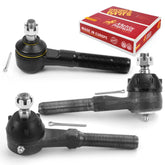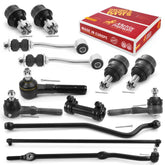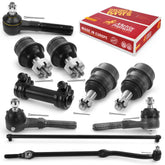How to Replace Your Brake Rotors: Step-by-Step Guide
Brake rotors, also known as brake discs, are a vital component of your vehicle's braking system. Over time, these rotors can wear out due to constant friction and heat, compromising your car's braking performance and safety. Knowing how to replace your brake rotors is an essential skill for any car owner, as it can save you money on repair costs and ensure a safer driving experience. In this guide, we will walk you through the step-by-step process of replacing your brake rotors.
Before You Begin:
Ensure Safety:
Always prioritize safety when working on your vehicle. Park your car on a level surface, engage the parking brake, and use wheel chocks to prevent any movement. Wear safety glasses and gloves to protect yourself during the process.
Open the hood and check the brake fluid reservoir. If it’s full, some fluid needs to be removed. This will help avoid spillage due to overflow when compressing the brake caliper piston.
Step-by-Step Guide
1) Loosen the Lug Nuts:
Use a lug wrench to slightly loosen the lug nuts on the wheel where you'll be replacing the brake rotors. Do not remove them completely at this stage.
2) Lift the Vehicle:
Position the jack under the designated lifting point of your vehicle and lift it off the ground. Place jack stands securely underneath for added safety. Ensure that the vehicle is stable before proceeding.
3) Remove the Wheel:
Once the vehicle is securely on the jack stands, unscrew the lug nuts fully and remove the wheel, exposing the brake assembly.
4) Disassemble the Brake Caliper:
Locate the brake caliper, which holds the brake pads and encloses the brake rotor. Remove the caliper bolts using a socket and ratchet. Carefully pry the caliper off the brake rotor, taking care not to damage the brake line.
5) Inspect and Replace Brake Pads (if necessary):
While the caliper is off, inspect the brake pads for wear. If they are worn down significantly, it is a good idea to replace them as well. Follow the manufacturer's instructions for replacing the brake pads.
6) Remove the Brake Rotor:
With the brake caliper removed, the brake rotor will now be visible. Inspect the rotor for any signs of damage or excessive wear. To remove the brake rotor, it may be necessary to remove any retaining screws or clips holding it in place.
7) Prepare the New Brake Rotor:
Clean the new brake rotor with brake cleaner to remove any protective coating. This ensures optimal braking performance. Also, check for any specific instructions or recommendations from the manufacturer.
8) Install the New Brake Rotor:
Carefully place the new brake rotor in position, aligning it with the wheel studs. If there were retaining screws or clips, ensure they are correctly reinstalled. Use a lug nut to hold the rotor in place temporarily.
9) Reassemble the Brake Caliper:
Apply a thin layer of anti-seize compound or brake lubricant to the back of the brake pads. Carefully reattach the brake caliper over the new brake rotor. Tighten the caliper bolts to the manufacturer's recommended torque using a torque wrench.
10) Check the Brake Fluid Reservoir
If necessary, fill the brake fluid reservoir up to the maximum fill line. Before proceeding to the next step, ensure that the brake fluid reservoir cap is properly installed to prevent any spills.
11) Replace the Wheel:
Put the wheel back in place and hand-tighten the lug nuts. Lower the vehicle slowly using the jack and remove the jack stands.
12) Tighten the Lug Nuts:
With the vehicle on the ground, tighten the lug nuts in a star pattern to ensure even pressure distribution. Refer to your vehicle's manual for the correct torque specification.
13) Test the Brakes:
Before driving, pump the brake pedal a few times to allow the brake caliper to adjust to the new rotors. Take your vehicle for a test drive at low speeds to ensure everything works correctly.
Replacing your brake rotors is a critical maintenance task that ensures your vehicle's safety and optimal braking performance. By taking the necessary safety precautions, you can confidently replace your brake rotors and keep your car running smoothly. Please note that certain steps might vary based on the year, make, and model of your vehicle. For more detailed and specific information, we recommend referring to a repair guide or watching one of our vehicle-specific videos. If you encounter any difficulties or feel unsure about performing this task, don't hesitate to seek professional assistance from a qualified mechanic.
Stay connected with us to access more information about brake rotors and explore our wide range of rotor options. Follow our updates to stay informed about the latest developments, product offerings, and expert tips on maintaining your vehicle's braking system.









